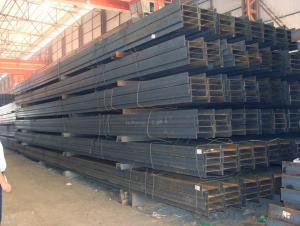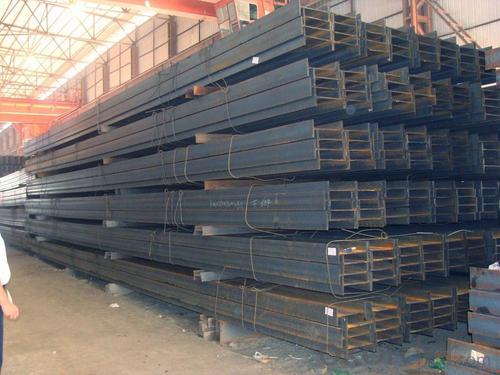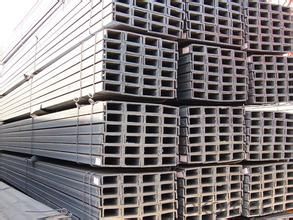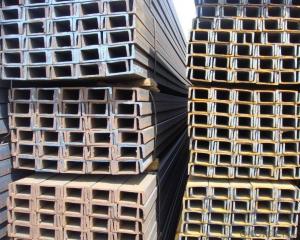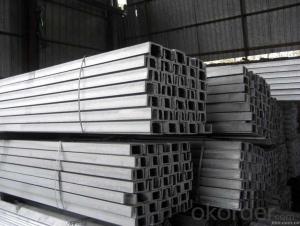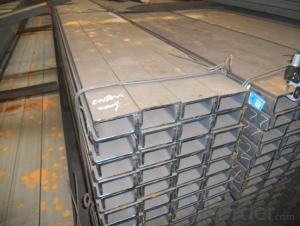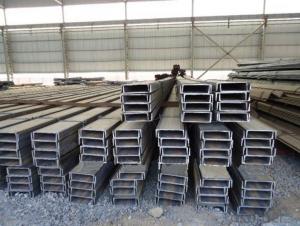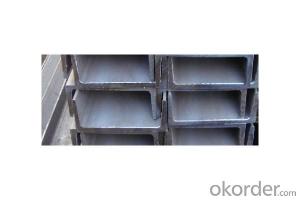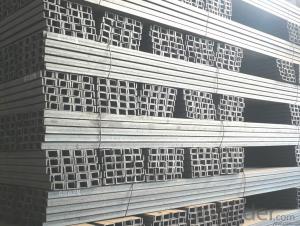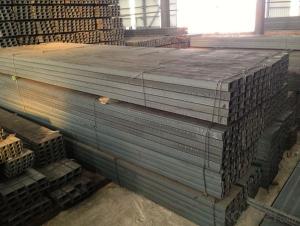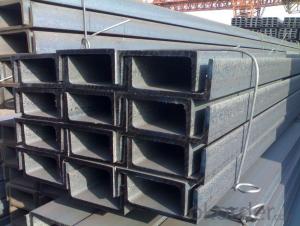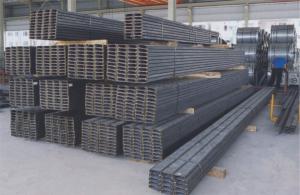Hot Rolled Channel Stee for Construction Use of High Quality
- Loading Port:
- Qingdao
- Payment Terms:
- TT OR LC
- Min Order Qty:
- 2000 PCS
- Supply Capability:
- 40000 PCS/month
OKorder Service Pledge
OKorder Financial Service
You Might Also Like
High Quality Hot Rolled Channel Steel/ Channel Iron/Steel Channel for Construction Use Details
Standard: | GB,JIS | Dimensions: | 50*25-125*65mm | Grade: | Q235 or SS400 |
Place of Origin: | China (Mainland) | Brand Name: | CNBM | Model Number: | 50*25-125*65mm |
Shape: | U Channel | Application: | Construction | Perforated Or Not: | Not Perforated |
Packaging & Delivery
Packaging Detail: | standard seaworthy packing |
Delivery Detail: | about 15-30 days after receiving the deposit or LC |
High Quality Hot Rolled Channel Steel/ Channel Iron/Steel Channel for Construction Use Specifications:
1.Hot rolled channel steel for construction use
2.Size:50*25mm-125*65mm
3.Material:Q235/SS400
4.Length:6m or 12m
5.Standard:JIS
6.Tolerance:8-12%, or according to your requirements.
High Quality Hot Rolled Channel Steel/ Channel Iron/Steel Channel for Construction Use Pictures
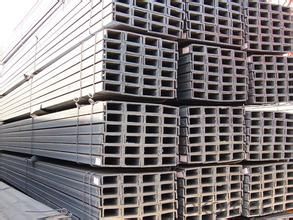
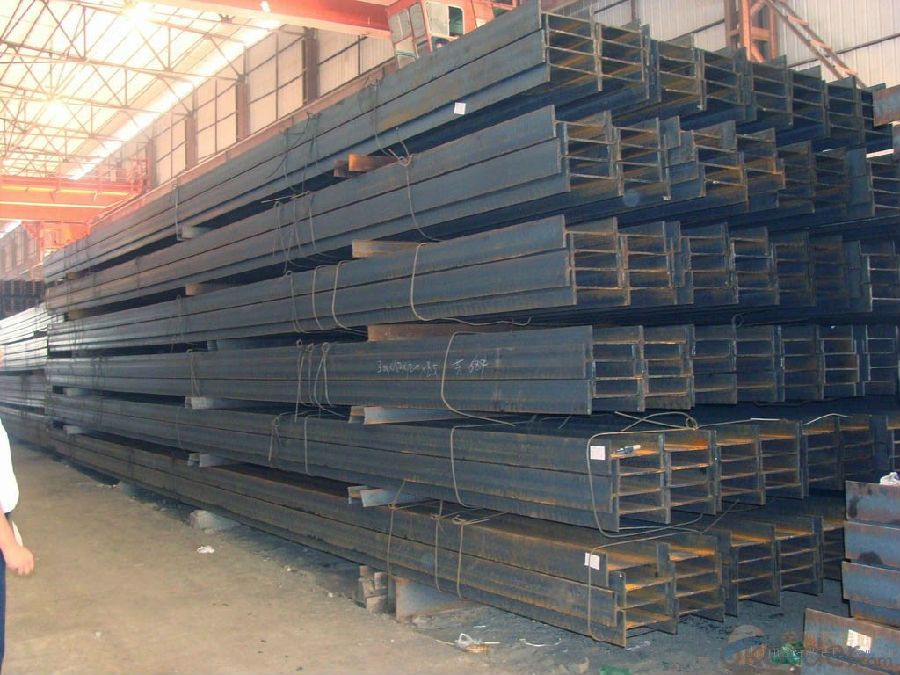
- Q: Galvanized steel plate, channel steel, angle steel how to take samples, how to submit?
- Each batch of 60t of the same raw material, the same batch number, the same grade, the same variety, the same size and the same delivery status is used as a batch. Sampling requirements: symmetry type steel (such as steel, T steel), in the distance where the interception endpoint 1/6 length long 500 mm, 20 mm wide rectangular healthy specimens, non symmetry type steel (such as steel, L steel), in the distance where the endpoint 1/3 length of 500 interception mm, 20 mm wide rectangular specimens. Direct interception of local plate in from the outer ends of the 12.5 mm long 500 mm, 20 mm wide rectangular specimens. Take one for tensile test and one for cold bending test.
- Q: Can steel channels be used for sign supports?
- Yes, steel channels can be used for sign supports. Steel channels are often used in construction and engineering projects due to their strength and durability. They are commonly used in applications where a high load-bearing capacity is required, making them suitable for supporting signs. Steel channels can be easily fabricated and customized to meet specific requirements, and they offer excellent resistance to weathering and corrosion, ensuring the longevity of sign supports. Additionally, steel channels provide stability and rigidity, ensuring that signs remain securely in place even in harsh environmental conditions.
- Q: Can steel channels be used for supporting suspended ceilings?
- Supporting suspended ceilings is one of the uses for steel channels. In the field of construction, steel channels are widely employed due to their robustness and durability. They offer a solid framework for securing and supporting suspended ceilings, which are typically constructed from lightweight materials like gypsum board or acoustical tiles. The installation of steel channels in a grid-like pattern across the ceiling is customary, with the suspended ceiling material being fastened to them using clips or hangers. This setup facilitates the easy installation and removal of the suspended ceiling panels while ensuring their reliable support. Additionally, steel channels possess resistance against moisture, fire, and pests, making them an excellent option for supporting suspended ceilings in diverse environments.
- Q: Are steel channels compatible with other building materials?
- Steel channels, when it comes to other building materials, are indeed compatible. In construction projects, steel channels are frequently employed as structural support elements and can be effortlessly integrated with various building materials like concrete, wood, and even other metals. To illustrate, steel channels can be incorporated into concrete structures to provide supplementary reinforcement and strength. In a building's framework, they can also serve to connect and support wooden beams or trusses. Furthermore, steel channels can be joined together with other steel components through welding or bolting, enabling the creation of intricate and adaptable structures. This compatibility with other building materials has made steel channels a favored option in construction projects, as they can readily be combined with different materials to meet specific design and engineering requirements.
- Q: Are steel channels cost-effective?
- Yes, steel channels are considered cost-effective due to their durability, strength, and versatility. They provide long-term value as they require minimal maintenance and can support heavy loads, making them suitable for various construction and manufacturing applications. Additionally, steel channels are readily available and can be easily fabricated and installed, reducing labor and material costs.
- Q: What are the applications of steel channels in the automotive industry?
- Steel channels have a wide range of applications in the automotive industry, thanks to their strength, durability, and versatility. Here are some key uses of steel channels in this industry: 1. Vehicle frames: Steel channels are commonly employed in constructing vehicle frames due to their high strength-to-weight ratio. They provide structural support and rigidity to the overall frame, ensuring the vehicle's safety and stability. 2. Chassis components: Various chassis components, including cross members, beams, and support brackets, are manufactured using steel channels. These components help maintain the vehicle's structural integrity, enhancing its overall performance and handling. 3. Bumpers: Steel channels are frequently used to fabricate bumpers, providing impact resistance and protecting the vehicle from collisions. They offer the necessary strength and durability to withstand impacts, ensuring passenger safety. 4. Suspension systems: Steel channels play a crucial role in producing suspension systems, including control arms, torsion bars, and trailing arms. These components support the vehicle's weight, absorb shocks, and provide stability, thereby enhancing the overall ride quality. 5. Exhaust systems: Steel channels are commonly utilized in manufacturing exhaust systems due to their ability to withstand high temperatures, corrosion, and vibrations. They are employed in fabricating exhaust pipes, mufflers, and brackets, ensuring efficient and reliable exhaust performance. 6. Engine components: Various engine components, such as engine mounts, brackets, and support structures, find applications for steel channels. They provide the necessary strength and stability to support the engine, reducing vibrations and enhancing overall performance. 7. Body reinforcements: Steel channels are used to reinforce the vehicle's body structure, especially in areas prone to impact or collision, such as door frames, pillars, and roof supports. This helps improve the vehicle's crashworthiness and protect occupants during accidents. Overall, steel channels are essential in the automotive industry, playing a crucial role in enhancing the strength, durability, and safety of vehicles. Their applications range from supporting the vehicle's frame and chassis to various components such as bumpers, suspension systems, exhaust systems, and engine components.
- Q: What are the different types of bracing systems used with steel channels?
- There are several types of bracing systems used with steel channels, including knee bracing, cross bracing, and diagonal bracing. Knee bracing involves using steel angles to connect the channel to the supporting structure, providing lateral stability. Cross bracing involves diagonal members connecting different channels or sections, increasing overall rigidity. Diagonal bracing consists of diagonal members connecting the top and bottom flanges of the channel, providing stability against lateral loads.
- Q: Is channel steel expensive or angle expensive?
- If the loading requirement is not high, then use the angle iron is good, with angle steel to save money, channel steel beam ah, what is more. Relatively high bearing capacity. Landlord mainly in the right place, with the right products, the most economical, and rely on live.
- Q: What are the different load distribution methods for steel channels?
- Some different load distribution methods for steel channels include using various types of connections such as bolting or welding, utilizing structural supports or brackets to distribute the load, and employing load-bearing walls or columns to evenly distribute the weight. Additionally, the use of beams or trusses can help distribute the load across multiple channels, providing increased stability and support.
- Q: What's the name of channel steel?
- Channel only classification, no alias.Such as: waist height is the same, leg width and waist thickness of different, you can have a, B, C three models.
Send your message to us
Hot Rolled Channel Stee for Construction Use of High Quality
- Loading Port:
- Qingdao
- Payment Terms:
- TT OR LC
- Min Order Qty:
- 2000 PCS
- Supply Capability:
- 40000 PCS/month
OKorder Service Pledge
OKorder Financial Service
Similar products
Hot products
Hot Searches
Related keywords
